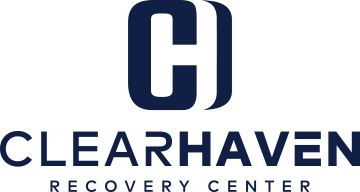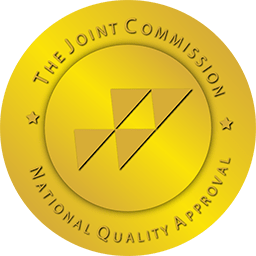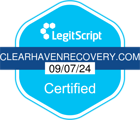Addiction is a chronic and complex disease that affects millions of people worldwide. Addiction is characterized by the compulsive use of drugs or alcohol despite the negative consequences it may cause. Addiction has a significant impact on the brain, affecting the reward center, decision-making, and impulse control. Addiction is not a choice, but rather a disease that requires medical intervention. Traditional methods of addiction treatment, such as counseling and support groups, may not be enough for some individuals. Medication-Assisted Treatment (MAT) has emerged as a promising solution to address addiction relapse prevention.
MAT involves using FDA-approved medications, in combination with behavioral therapies, to treat addiction. MAT has been shown to be an effective tool in the fight against addiction, particularly in preventing relapse. MAT works by reducing cravings and withdrawal symptoms, which can help individuals stay sober and engaged in treatment. However, there is still a lot of debate and misconceptions surrounding the use of medications for addiction treatment. In this article, we will explore the science behind MAT and how it can be an effective tool in the fight against addiction.
How addiction affects the brain
To understand how MAT works, it is important to understand how addiction affects the brain. Addiction is a disease that affects the reward center of the brain, which is responsible for releasing dopamine, a neurotransmitter that is associated with pleasure and reward. Drugs and alcohol stimulate the release of dopamine, causing a surge in pleasure and reward. This surge in dopamine reinforces the behavior, making it more likely to be repeated. Over time, the brain adapts to the constant influx of dopamine, leading to a decrease in the number of dopamine receptors, making it harder for the individual to feel pleasure. This is what leads to the compulsive use of drugs or alcohol, as the individual is trying to recapture the feeling of pleasure and reward.
Addiction also affects other areas of the brain, including the prefrontal cortex, which is responsible for decision-making and impulse control. Addiction can impair these functions, making it harder for the individual to make rational decisions and resist the urge to use drugs or alcohol. Addiction can also cause changes in the brain’s stress response system, leading to an increase in stress and anxiety. These changes in the brain can make it difficult for individuals to quit using drugs or alcohol, even if they want to.
The role of MAT in addiction treatment
MAT has emerged as a promising solution for addiction treatment, particularly in preventing relapse. MAT involves using FDA-approved medications, in combination with behavioral therapies, to treat addiction. The medications used in MAT work by reducing cravings and withdrawal symptoms, which can help individuals stay sober and engaged in treatment.
MAT is not a standalone treatment but rather a comprehensive approach to addiction treatment. MAT should be used in conjunction with behavioral therapies, such as counseling and support groups. Behavioral therapies can help individuals address the underlying causes of addiction, develop coping skills, and learn how to manage stress and triggers.
MAT is not a one-size-fits-all approach to addiction treatment. The medications used in MAT are tailored to each individual’s needs based on their drug of choice, severity of addiction, and other medical factors. MAT should be prescribed by a licensed healthcare provider who is trained in addiction medicine.
Types of medications used in MAT
There are several medications approved by the FDA for the treatment of addiction. The medications used in MAT can be classified into three categories: agonists, partial agonists, and antagonists. Agonists mimic the effects of the drug of abuse, while partial agonists and antagonists block the effects of the drug of abuse.
One of the most commonly used medications in MAT is methadone, which is a synthetic opioid agonist. Methadone works by mimicking the effects of opioids, reducing cravings and withdrawal symptoms. Methadone is dispensed daily at a licensed opioid treatment program. Another medication commonly used in MAT is buprenorphine, which is a partial opioid agonist. Buprenorphine works by binding to the same receptors as opioids, reducing cravings and withdrawal symptoms. Buprenorphine can be prescribed by a licensed healthcare provider who has completed the required training. Another medication used in MAT is naltrexone, which is an opioid antagonist. Naltrexone works by blocking the effects of opioids, reducing cravings and preventing relapse. Naltrexone can be administered orally or by injection.
Benefits of MAT for addiction relapse prevention
MAT has several benefits for addiction relapse prevention. MAT has been shown to be effective in reducing cravings and withdrawal symptoms, which can help individuals stay sober and engaged in treatment. MAT can also reduce the risk of overdose, as the medications used in MAT are safer than the drugs of abuse. MAT can also improve overall quality of life, as individuals in MAT are more likely to be employed, have stable housing, and have better physical and mental health.
MAT is also associated with better treatment retention rates. Individuals in MAT are more likely to stay engaged in treatment and complete treatment. This is important, as longer treatment durations are associated with better treatment outcomes.
Evidence-based studies on MAT effectiveness
MAT has been extensively studied and has been shown to be effective in treating addiction. A study published in the New England Journal of Medicine found that individuals receiving methadone had a 30% reduction in opioid use and a 50% reduction in heroin use compared to those receiving no treatment. Another study found that individuals receiving buprenorphine had a 40% reduction in opioid use and a 50% reduction in heroin use compared to those receiving no treatment. Naltrexone has also been shown to be effective in reducing opioid use and preventing relapse.
Misconceptions about MAT
There are still many misconceptions surrounding the use of medications for addiction treatment. One of the most common misconceptions is that MAT simply replaces one addiction with another. This is not true. The medications used in MAT are FDA-approved and are prescribed by licensed healthcare providers. The medications used in MAT are safer than the drugs of abuse and are used to treat addiction, not to get high.
Another misconception is that MAT is not effective. This is also not true. MAT has been extensively studied and has been shown to be effective in treating addiction and preventing relapse. MAT should be used in conjunction with behavioral therapies for the best treatment outcomes.
How to access MAT
MAT should be prescribed by a licensed healthcare provider who is trained in addiction medicine. Individuals interested in MAT should speak with their healthcare provider about their treatment options. MAT can be accessed at licensed opioid treatment programs, as well as through healthcare providers who have completed the required training.
Considerations for MAT treatment
MAT is not a standalone treatment but rather a comprehensive approach to addiction treatment. MAT should be used in conjunction with behavioral therapies, such as counseling and support groups. Individuals in MAT should also be closely monitored by their healthcare provider to ensure the medications are working effectively and to monitor for any potential side effects.
MAT is not appropriate for everyone. MAT should be tailored to each individual’s needs and medical history. Individuals who are pregnant or have certain medical conditions may not be candidates for MAT.
MAT and holistic addiction treatment
MAT is just one component of a holistic approach to addiction treatment. Holistic addiction treatment addresses the physical, emotional, and spiritual aspects of addiction. Holistic addiction treatment may include counseling, support groups, exercise, meditation, and other activities that promote overall health and wellness. MAT can be used in conjunction with holistic addiction treatment to provide a comprehensive approach to addiction treatment.
Conclusion
Addiction is a complex disease that requires medical intervention. Medication-Assisted Treatment (MAT) has emerged as a promising solution to address addiction relapse prevention. MAT involves using FDA-approved medications, in combination with behavioral therapies, to treat addiction. MAT has been shown to be effective in reducing cravings and withdrawal symptoms, preventing relapse, and improving overall quality of life. MAT is not a one-size-fits-all approach to addiction treatment and should be tailored to each individual’s needs and medical history. MAT should be used in conjunction with behavioral therapies and other holistic approaches to provide a comprehensive approach to addiction treatment.
Contact us at 833.970.2054 to speak with one of our knowledgeable addiction specialists. We will give you the information you need to find a outpatient addiction treatment program near you that meets your needs.











